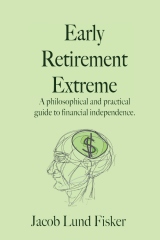As mentioned in part 1, I am reluctant to give specific investment advice on this blog. The reason is that unlike frugality and personal finance, which anyone can learn in a couple of months (the difficult part is following through), investing properly takes at least a couple of years (here too, the difficult part is following through).
I saved money for 4 years before I even began investing. I’m throwing this out there, because an extreme early retirement strategy does not rely on compound returns simply because there are not very many years during which it can compound. If the market is with you, you may reach your goal in 4.5 years instead of 5.5.
That said, I realize that “being in the market” can be exciting. I also realize that many probably would not want to spend much time dealing with investments, so in part II, I’ll describe a method that is useful for cash flow and is simple to implement.
It is called Dogs of the Dow. It is a no-fee method. All you pay are trading commissions and you can easily find a broker that offers this. You will only need to make 10-20 trades a year. I use this method myself for my IRA money. (I have an IRA to reduce my taxable income.)
To implement Dogs of the Dow, all you need to do is to rebalance into equal amounts of the 10 highest yielding Dow stocks each year. That is essentially, the first ten on this list. This collection of stocks currently pay 4.4% and so it provides adequate cash flow for your recurring expenses without the need to liquidate stock (this is not the case for a broad index fund).
Each year, you check back. Sell any position that is no longer in the top ten. Buy any new position in the top ten. To minimize capital gains tax, hold gainers for slightly more than one year before you sell them and hold losers for slightly less than one year before you sell them. If you do not understand the tax rules for this, learn them—if you know how to fill out schedule D, you already understand this.
Obviously, you don’t want to sell off an entire position and then buy it again. This will trigger wash rules and other annoyances. Just sell or buy a little of each position that needs adjustment.
Only trade once a year. Add or withdraw cash the rest of the year.
There are two ways of handling your cash position. The first one is dollar cost averaging. This makes you fully invested at all times and thus Wall Street likes this one and promotes it at every chance.
The other one is value averaging. With value averaging, assume, you have 100k in stocks and 20k in cash. Next year you decide you want 106k in stocks, setting a 6% growth rate. It is up to you to set the growth rate. I would set it at your withdrawal rate + inflation or around 6%. If you portfolio has dropped to 97k, you need to add 106-97=9k to it. If the portfolio has risen to 109k, you need to take 109-106=3k out of it and put it towards your cash position. Next year, the stock part should be at 106*1.06 = 112k. And so on.
This method will automatically sell stocks in years where stock performance market is strong and buy stocks in years where stock market performance is weak.
I think index investing with a 3-5 year cash buffer is the simplest strategy you can get away with. The Dogs of the Dow portfolio, which is almost as simple, allows for less of a cash buffer and should therefore have higher return rates (not to mention its historically higher return rates, after all, you’re not buying overpriced stocks which you would when index investing). It should also fare better during a protracted market decline that lasts longer than your cash buffer.
Yet as I said, investing is very individual. Do whatever makes you sleep well at night.

